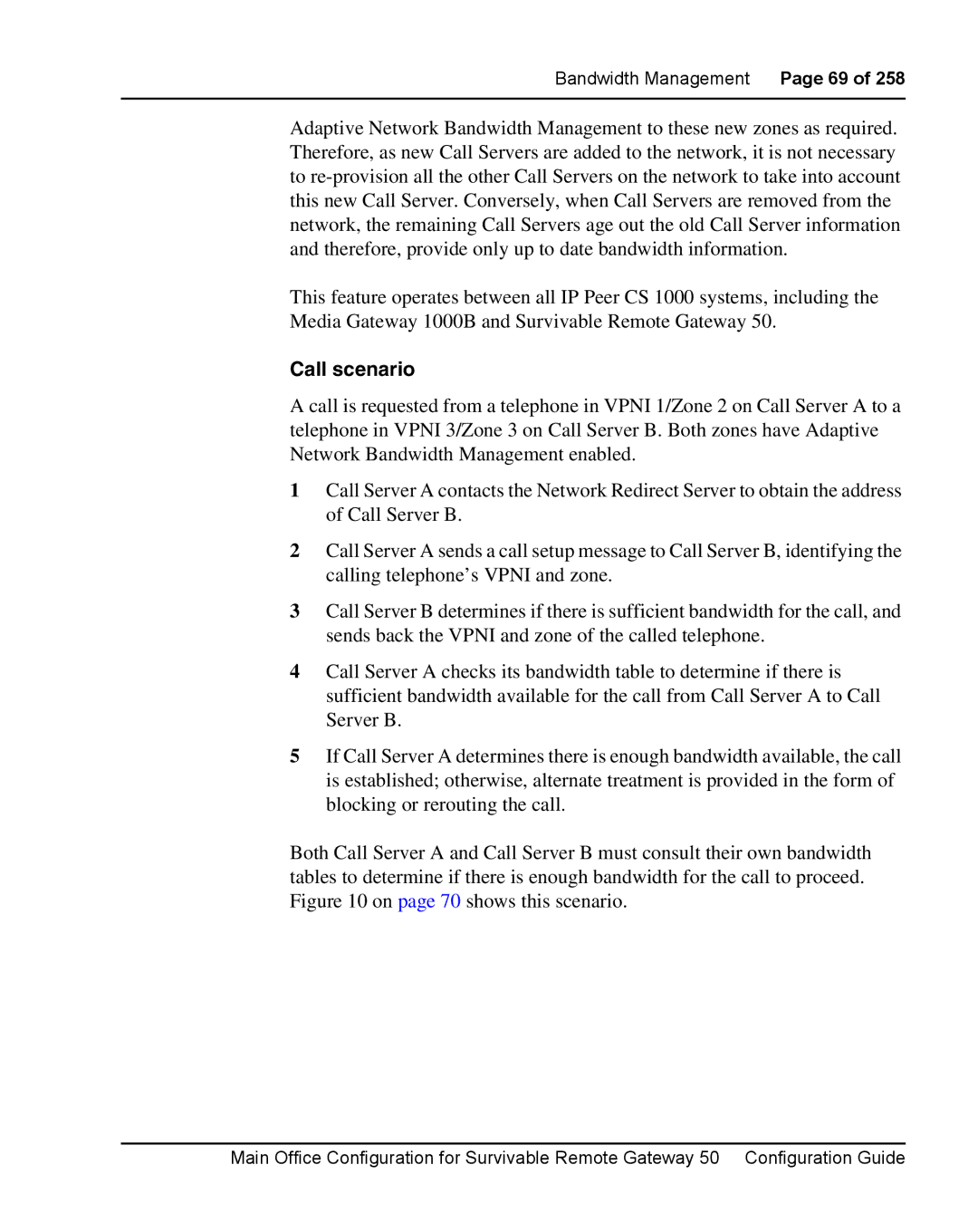
Bandwidth Management Page 69 of 258
Adaptive Network Bandwidth Management to these new zones as required. Therefore, as new Call Servers are added to the network, it is not necessary to
This feature operates between all IP Peer CS 1000 systems, including the Media Gateway 1000B and Survivable Remote Gateway 50.
Call scenario
A call is requested from a telephone in VPNI 1/Zone 2 on Call Server A to a telephone in VPNI 3/Zone 3 on Call Server B. Both zones have Adaptive Network Bandwidth Management enabled.
1Call Server A contacts the Network Redirect Server to obtain the address of Call Server B.
2Call Server A sends a call setup message to Call Server B, identifying the calling telephone’s VPNI and zone.
3Call Server B determines if there is sufficient bandwidth for the call, and sends back the VPNI and zone of the called telephone.
4Call Server A checks its bandwidth table to determine if there is sufficient bandwidth available for the call from Call Server A to Call Server B.
5If Call Server A determines there is enough bandwidth available, the call is established; otherwise, alternate treatment is provided in the form of blocking or rerouting the call.
Both Call Server A and Call Server B must consult their own bandwidth tables to determine if there is enough bandwidth for the call to proceed. Figure 10 on page 70 shows this scenario.
Main Office Configuration for Survivable Remote Gateway 50 Configuration Guide
